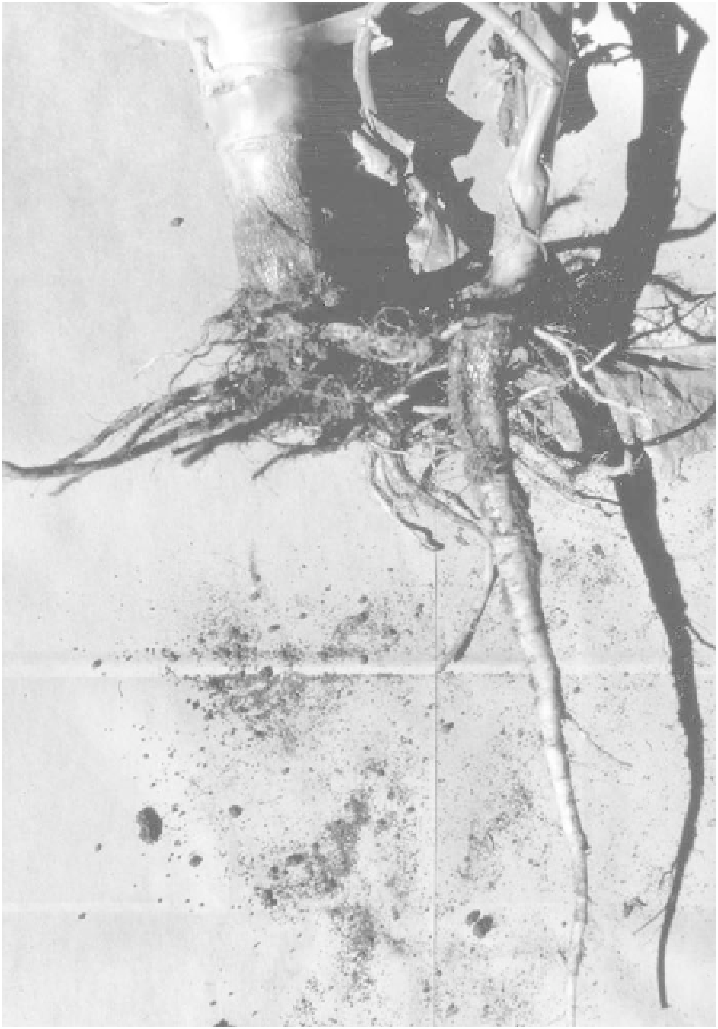Agriculture Reference
In-Depth Information
FIGURE 13.3
Different root architectures permitting niche overlap.
The shallow root system of the transplanted broccoli (left)
and the deeper tap root system of the direct-seeded wild mustard (right) take resources from different parts of the soil profile, allowing
the plants to occupy the same habitat without negative interference.
P
ROMOTING
OR
I
NHIBITING
E
STABLISHMENT
OF
W
EEDY
S
PECIES
disturbance, where total plant biomass undergoes less
disruption or removal, competitive (but still
r
-selected)
biennial or perennial weeds become common. In a sense,
weediness is a relatively specialized niche characteristic.
The habitat facet of the niche concept can be used to
help guide how the environmental conditions of a farm
field are manipulated in order to promote or inhibit the
establishment of weedy species. The type of modification
will depend on the niche specificity of each species in
Any part of the soil surface not occupied by the crop
population is subject to invasion by weedy noncrop spe-
cies. Specialized for being successful in what can be
termed productive environments (i.e., farm fields), weeds
occupy a niche that favors
r
-selected or ruderal popula-
tions of annual herbs. In cropping systems with lesser

Search WWH ::

Custom Search